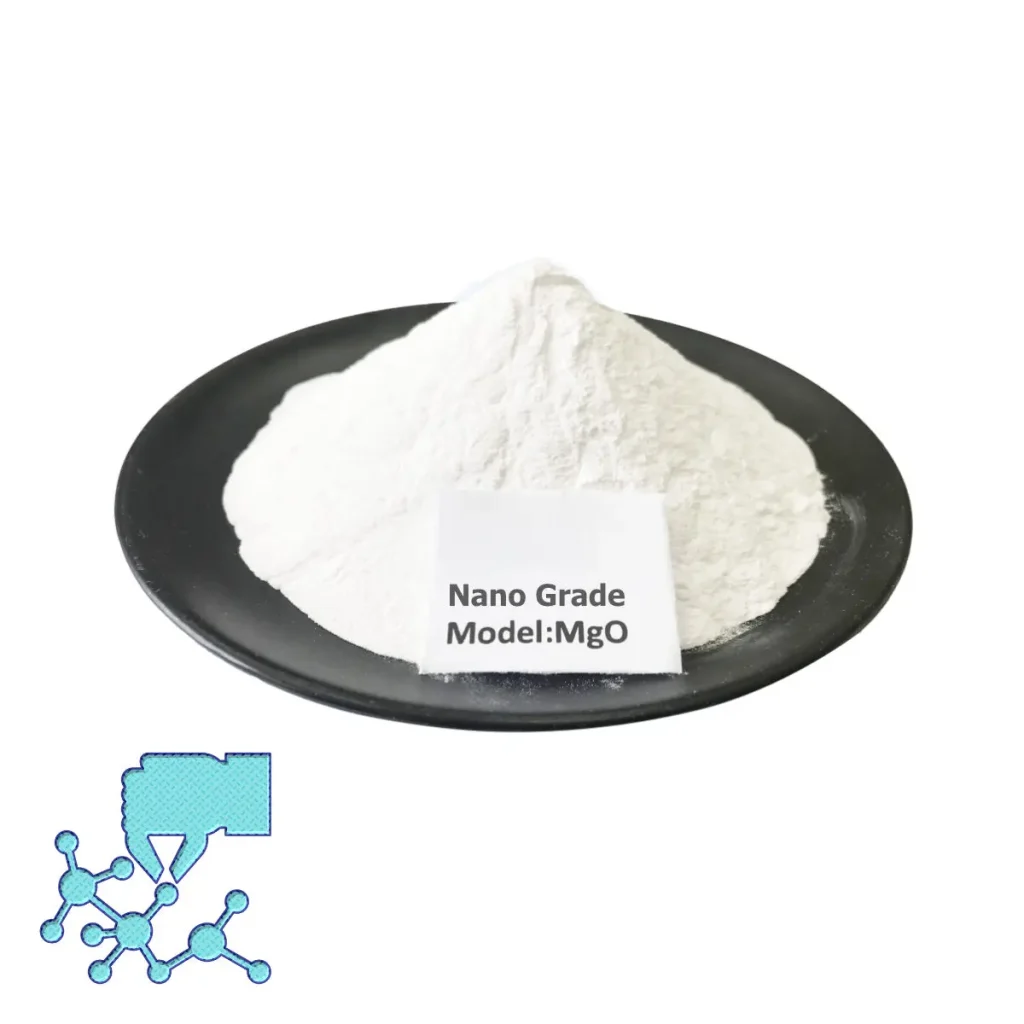Hebei Messi Biology Co., Ltd. stated that MgO is a white fine ceramic powder. In addition to being sintered by itself to make MgO ceramics, it can also be synthesized and compounded with other compounds or used as additives to make high-performance ceramics or crystals. Typical application scenarios of MgO are as follows:
1. Typical applications as main ingredients
1. MgO transparent ceramic
MgO transparent ceramic has the advantages of low density, high temperature resistance, high insulation, excellent mechanical properties, high infrared transmittance, good chemical stability and low emissivity. It is a high-performance infrared window and sensor protection Materials etc.

2. MgAl2O4 transparent ceramic
MgAl2O4 transparent ceramic has excellent optical transmittance that almost covers the ultraviolet to infrared region (190nm<λ<6000nm). It also has the advantages of high hardness, high strength, high temperature resistance, low emissivity, resistance to sand erosion, rain erosion and impact resistance. It has been widely used in fields such as transparent armor, missile windows and fairings. MgAl2O4 is formed by reacting MgO and Al2O3 in a stoichiometric ratio of 1:1, with MgO mass proportion being 28.2%.
3. Co2+ doped MgAl2O4 crystal
Co2+-doped magnesium-aluminum spinel (Co:MgAl2O4) crystal is an effective material for passive Q-switched solid-state lasers operating in the near-infrared region. The high-peak power pulsed laser generated through its passive Q-switching effect has the characteristics of the human eye. It has the characteristics of low damage, strong penetration ability, low transmission loss and strong photoelectric countermeasures capability. It can be widely used in fields such as space optical communications, rapid battlefield ranging, and lidar of unmanned equipment. The mass proportion of 99.995% high-purity MgO in Co2+-doped MgAl2O4 crystal is similar to that of MgAl2O4 transparent ceramics.
4. MgO-Y2O3 composite phase ceramics
By utilizing the “pinning effect” between MgO and nano-Y2O3 to mutually inhibit grain growth, MgO-Y2O3 composite ceramics with mechanical properties higher than those of the single phase and optical transmittance not inferior to those of the single phase can be prepared, which can be used in manufacturing Transparent armor, missile hood, high temperature observation window and aviation window, etc. In MgO-Y2O3 composite ceramics, the volume ratio of MgO to Y2O3 is usually 1:1, which translates into mass MgO accounting for approximately 41.7%.
5. MgO series microwave dielectric ceramics
With the update and iteration of mobile communications and satellite communications technology, people have higher and higher requirements for communication frequency bands, making low dielectric and high Q ceramics a research hotspot. On the one hand, MgO ceramic itself has excellent dielectric properties (εr=9.1, tanδ<1.6×10-6) and is an ideal microwave dielectric substrate material for 5G communications. On the other hand, MgO-TiO2 series (mainly MgTiO3) microwave dielectric ceramics have important application prospects in electronic components such as resonators and filters due to their excellent dielectric properties [6]. MgTiO3 is formed by the reaction of MgO and TiO2 in a stoichiometric ratio of 1:1, with MgO mass accounting for 33.3%.
2. Typical applications as additives
1. As a sintering aid for high-performance ceramic heat dissipation substrates
As high-power electronic devices in the fields of high-speed rail, aerospace and military industry develop towards high temperature, high frequency and high integration, efficient heat dissipation has become an urgent need. High-power devices achieve heat exchange with the outside world through ceramic copper-clad laminates. Currently, there are three mainstream ceramic substrates: Si3N4, AlN and Al2O3, all of which require MgO as a sintering aid. Especially for Si3N4 ceramics with excellent comprehensive properties, in order to avoid the lattice defects caused by Al2O3 as an additive and increase phonon scattering, MgO has become the preferred sintering additive for preparing high thermal conductivity Si3N4 ceramics, and its usage is about 3%.
2. As a sintering aid for transparent ceramics such as Al2O3, YAG and AlON
Transparent ceramics such as Al2O3, YAG and AlON all have good mechanical properties, stable chemical properties and excellent optical transmittance, and are widely used in many fields such as lighting, optical and medical instruments, armor and infrared detection. As an additive, MgO can significantly reduce the solid phase reaction temperature, drag the grain boundary migration speed, expel pores, and promote densification; inhibit grain boundary migration through the pinning effect, avoid abnormal grain growth, and optimize mechanical properties. The amount of MgO added to this type of transparent ceramic is relatively low (<1%), but its dispersion is very important.
3. As a sintering aid for ZTA wear-resistant ceramics
Both Al2O3 and ZrO2 have properties such as high temperature resistance, wear resistance and good biocompatibility. Using ZrO2 to toughen Al2O3 to prepare ZTA nanocomposite ceramics can maximize its strengths and avoid weaknesses and give full play to its integration advantages. It has important applications in aerospace, engine wear-resistant parts, and artificial femoral ball heads. The densification and grain refinement mechanism of MgO in ZTA ceramics is similar to that in Al2O3, and its usage is about 2%.
4. As LiNbO3 crystal additive
Magnesium-doped lithium niobate (MgO:LiNbO3) crystal has its unique advantages in the application of NCPM frequency doubling, frequency mixing and optical parametric oscillation (OPO) in lasers, and is widely used in optical parametric oscillation and optical parametric amplification. (OPA), quasi-phase matching and integrated optical waveguides [12]. The Curie temperature of LiNbO3 can be controlled by doping 99.995% high-purity MgO. The doping amount is usually less than 5 mol%, which is about less than 1.4% in mass.
The acquisition of high-performance ceramics is closely related to the properties of its starting materials and additives. High-purity, ultra-fine and highly dispersed magnesium oxide produced by applying unique purification process and granulation technology has the following advantages:
(1) Purity is as high as 99.95% and 99.995%, with extremely low sodium content;
(2) Good dispersion, easy to achieve uniform distribution in various ceramic matrices;
(3) Small particle size, uniform size distribution, high sintering activity; good sphericity, good fluidity, and easy molding.
Once launched, highly dispersible magnesium oxide has aroused enthusiastic response in the market of thermally conductive ceramics, transparent ceramics and functional ceramics. Hebei Messi Biology Co., Ltd. stated that various products prepared using highly dispersible magnesium oxide have met or even exceeded expectations in terms of product performance and stability.

